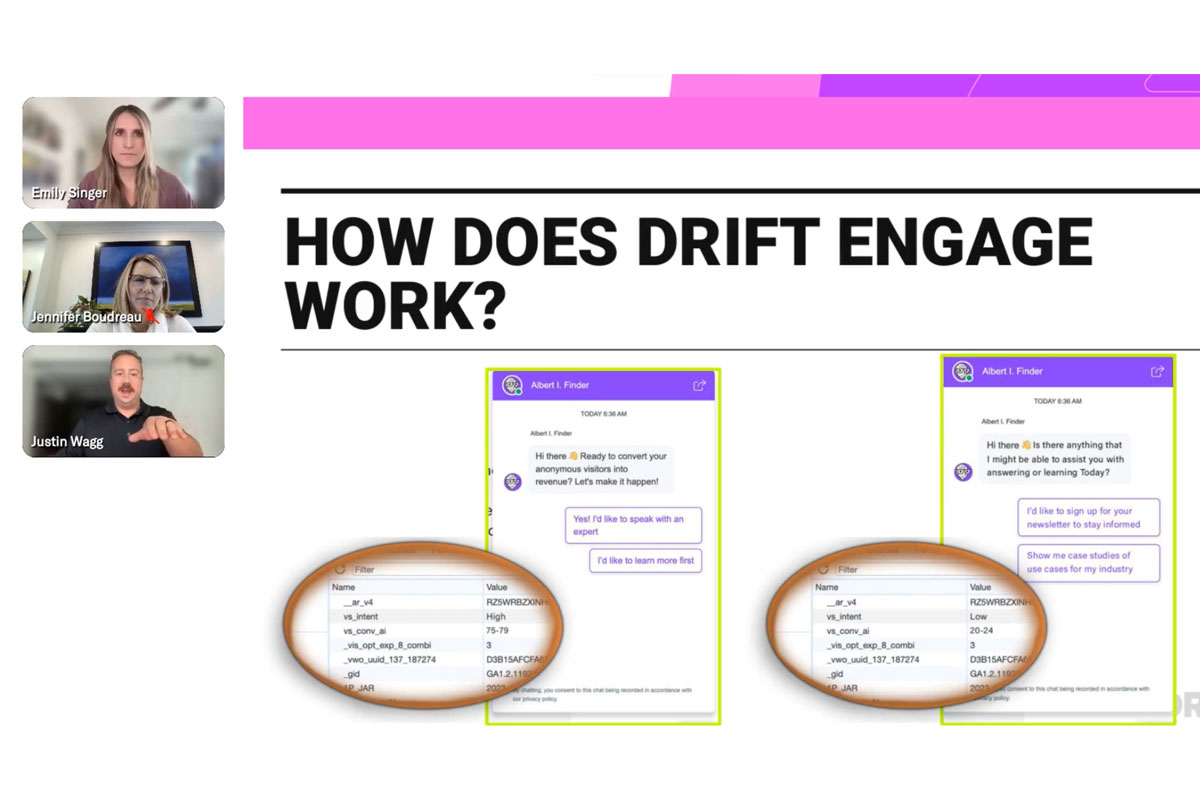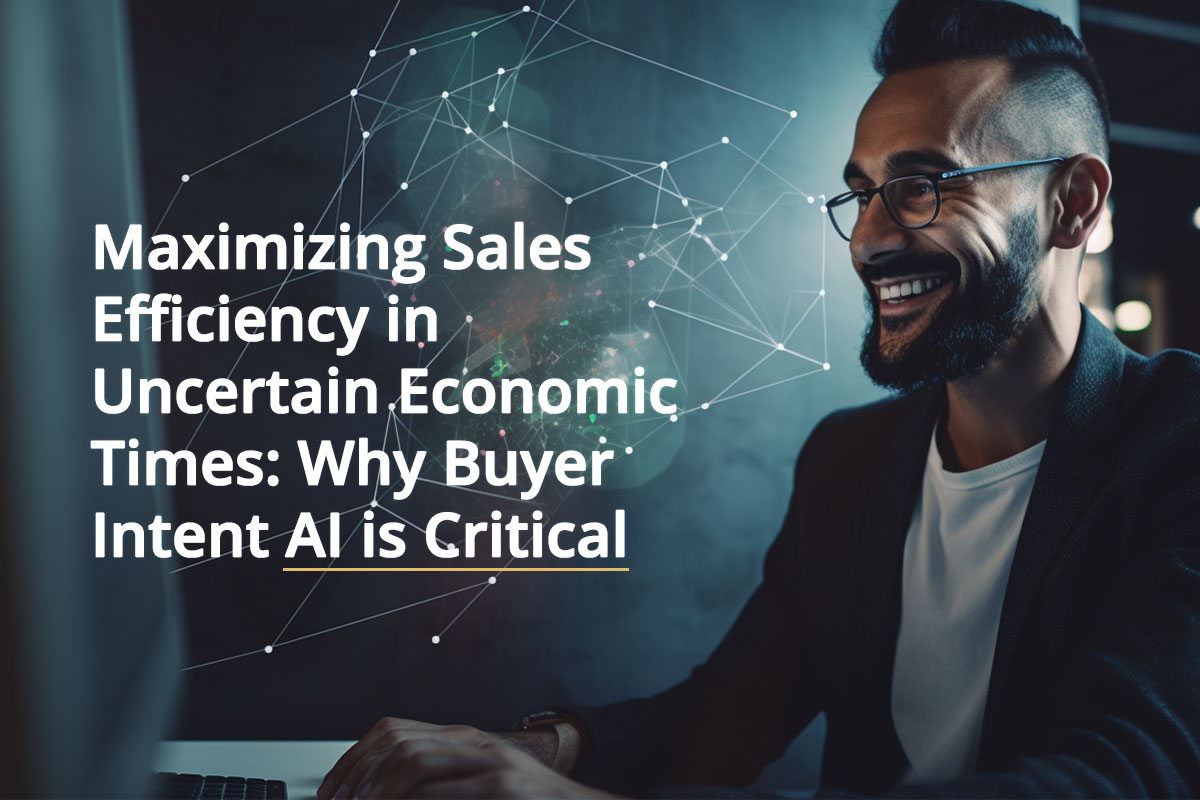It is time to evolve beyond putting chat only on your pricing page.
Until now, every website marketer using chat has assumed that visitors going to the pricing page, shopping cart, or quote page must have some intent to purchase from you (or become a lead) - and they’re not wrong.
But, a new Lift AI discovery has revealed an immense opportunity that’s missing from this strategy. Deep analysis of Lift AI data from millions of website visits has shown only 36% of your most promising visitors go to your pricing page(s). The remaining 64% of your most promising visitors are on your other pages, where providing chat can make an instrumental difference to your conversion rate.
If you're a company in the B2B space with longer, ABM-focused sales cycles, that number is 88% of your most promising visitors who are not on your pricing page (on average).
Here’s why:
The problem with putting chat only on your pricing page
Every page on your site, including the pricing page, has visitors that might be interested in purchasing your product, service, or solution. Those are your “high buyer intent” visitors. Your pricing pages do indeed have a large proportion of visitors that have high intent.
However, your pricing page (or any page) also has visitors that have less, little, or no intent on purchasing from you, i.e. “medium” or “low buyer intent visitors”.
So how can your pricing page visitors have medium or low intent? They could be students or competitors researching your price, or top of the funnel visitors who are in the beginning stages of their research trying to understand the approximate cost of your solution.
There is no question that the pricing page is an important part of your customer's buying journey, however buyers make decisions based on how your product will help them. So, many of your high intent visitors are not on your pricing pages, as the data shows they are actually on other areas of your site trying to understand how well your product will solve their problems.
It’s as if website marketers are fishing at a known “hotspot”, but without a fish finder they are merely guessing where the best fish are, or only catching a few of them:

Using a specific example from our productivity software client that demonstrates our findings:
- A strategy of putting chat just on the pricing page would have them only targeting 33,827 visitors out of a possible 1.3M visitors on their website across 60 days (2.6% of their entire traffic).
- Of these 33,827 visitors on the pricing page, 12,217 (36.1%) were identified to have high intent - so from a conversion strategy perspective it makes sense to have chat on the pricing page because a significant portion of visitors to the page have high buyer intent.
- But the problem with this approach is that we identified 63,601 high intent visitors across their entire website, and by using a pricing page strategy only, our client would only be targeting 19.2% (12,217 / 63,601) of their most valuable visitors, leaving the remaining 71.8% of high intent visitors unaccounted for.
- Looking at data from companies with an ABM-focused sales cycle, up to 88% of high intent visitors are not on the pricing page
But, you had no other plausible chat strategy
Our software client was not blind to what they were missing. The problem was, there was simply no way of knowing where the high intent visitors were on their site (until now).
One challenge they previously had with using chat outside of pricing pages is that the volume of visitors is much higher, which means it’s difficult to execute on chat programmes effectively and efficiently. For example, it would be prohibitively expensive to engage every single visitor across every single page with live sales agents, hoping that they would catch the high intent visitors in doing so. They would also quickly become overwhelmed with volume - and spend far too much time conversing with visitors who are not even close to converting.
Likewise, you wouldn’t want to deliver a chatbot experience to every visitor on every page, as they can be frustrating for visitors and don’t convert as well as a live agent.
However, by placing chat only on the pricing page, they were missing 71.8% of their “high intent” visitors who are on the other pages trying to find relevant answers. These are visitors that could strongly benefit from being engaged by a custom chat playbook designed to convert.
Given the results we found when building the case study for this software client, our curiosity piqued and we wanted to verify and validate our findings alongside our other clients. The results were staggering.
Lift AI data shows the trend happening across almost every client. We recently conducted a study spanning seven of our clients over a 60 day period. Here’s what we found
- 4,194,857 website users were tracked over 60 days in total
- Of all visitors, 335,134 made it to the pricing pages (8%)
- Of those 335,134 pricing page visitors, only 86,183 (25.7%) had high intent, the rest are medium or low intent
- However, Lift AI found a total of 237,853 high intent users across all pages of the site
- That means 64% (151,670) of high intent visitors were on other pages (not on pricing pages)
- If looking at data from companies with an ABM-focused sales cycle, that number increases to 88% of high intent visitors not on the pricing page
Below is a summary of our study’s findings

The figures here are even more substantial when you strip out B2C clients and focus solely on B2B clients. In the B2B space, the average number of high intent visitors on the pricing page is only 26%, meaning 84% of high intent visitors are actually on other pages across the site.
So, how do you find high intent visitors across the site?
In reality, a website visitor’s intent is a far more complex measure which should consider hundreds of other variables beyond the simplistic, “are they on the pricing page?”. So if a visitor’s journey as a whole is more important to their intent than one single action, how do we go about engaging visitors at the right place in their journey?
There is a solution for this. It’s called “buyer intent”, and it can be calculated with a high degree of accuracy in real-time using artificial intelligence (machine-learning models).
That’s what Lift AI does. It assigns each website visitor a “buyer intent score” using a machine-learning model which has been trained on billions of data points. Those data points span real profiles of website visitors, who are tracked all the way through real chat interactions that lead to sales.
Based on that training, plus real-time behavioral analytics of website visitors on your specific website, Lift AI can determine the buyer intent of visitors during their journey as it happens in real-time.
Those visitors are then segmented into high intent, medium intent, and low intent accordingly. With those segments of visitors, marketers can design custom chat playbooks to ensure the best chance of converting each segment.
The key takeaways from our analysis
There are two key takeaways from our data analysis.
The first takeaway is that Lift AI’s buyer intent model can help you engage 64% more of your high intent visitors, without the cost of dealing with all your low intent traffic.
By using an intent model that understands each visitor’s journey, you can engage all of your high intent visitors on any page without having to target every single visitor on those pages.
You simply target the high intent visitors across your site and design the right experience (chat playbook) for a high intent visitor. Now you can leverage your sales team to engage with the most promising visitors on your site, having great sales conversations with visitors who are truly interested in your solutions. One of our software clients, Formstack, was only engaging a small fraction of website visitors with their pricing page strategy, using Lift AI they were able to increase the size of their pipeline by 88% in the first 90 days.
The second takeaway is that a buyer intent model gives you a roadmap for capturing the remaining opportunity on your website - being medium and low intent visitors. By knowing their intent level, you can leverage automated experiences and playbooks that are designed to nurture, support, and escalate visitors accordingly.
"Leads captured through our Lift AI powered Drift playbooks consistently drive better pipeline and revenue per lead vs. all of our other lead capture tactics." -Bill MacKay - Manager, Digital Performance Marketing @ Formstack
Finding a strategy for ALL high intent visitors
As you can see, companies are missing out huge opportunities for visitor engagement, conversions, and revenue by following the old pricing page mentality. We’ve written a free ebook which details the old way of doing conversational marketing versus the new way, where you can learn more about this.
Even better, we can help you move away from the pricing page strategy to a Lift AI intent-led strategy. Simply talk to us here.






